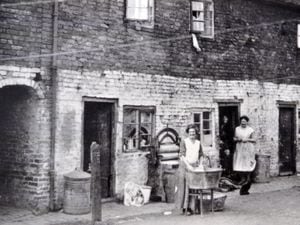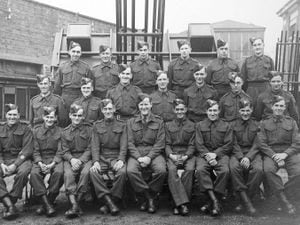Census figures recall days when toilets and bathrooms were a luxury
As a young man delivering firewood in the early 1960s, Bill Kerswell remembers the poverty and squalor of some of the areas he visited.

"We were fortunate enough to have an indoor toilet and bathroom, our house had been modernised in 1947," he says.
"Most people still had an outside privy, and on the farms people had the job of digging them out and spreading the slurry on the fields of rhubarb."
While the 1960s may be remembered for Swinging London, the nightclubs of Carnaby Street and the battle between The Beatles and the Stones, new figures from the Office for National Statistics remind us that for millions of people outside the big cities life was still far from swinging, particularly in rural areas.
While the Shropshire town of Clun, for example is considered a highly desirable area for people seeking retirement, this was certainly not the case 60 years ago.
In 1961, having an indoor toilet actually put you in a privileged minority, with just 47.9 per cent of the local population having either an indoor toilet or one attached to their home. At least by this time, half the population of the area had a fixed bath – just.
At that time 50.5 per cent of households enjoyed the luxury, but although it was still one of the worst figures in the West Midlands. Wolverhampton, on the other hand, which was in the process of seeing its pre-war slums swept away in the postwar housing revolution, fared much better, with 98.4 per cent of the population having their own toilet, although almost one in five households were still without a fixed bath.
While rural Shropshire had the some of the worst housing – 45 per cent of households in Wem were also without their own toilet – they did not have the monopoly on poor conditions, with one in five households in Wellington also lacking such facilities. In the Atcham council area, which included Shrewsbury, and Bridgnorth, 35 per cent of homes were without their own toilets.
The gap between rural and urban areas in the early 1960s is highlighted by the figures for Staffordshire.
Central Stafford fared relatively well, with just 2.8 per cent without an indoor toilet, and 15.7 per cent without a fixed bath. But in the area covered by Stafford Rural District Council, it was a different story, with well over a quarter of households having to share a toilet with their neighbours, and 27.8 per cent without a bath. There were similar disparities in Cannock, where 3.1 per cent of town dwellers were without an indoor toilet, but 18.8 per cent in rural parts. In the City of Lichfield, 4.2 per cent of homes were without a toilet, and while in Lichfield Rural District the figure was 14.2 per cent.
And while Wolverhampton might have been well ahead of its more rural neighbours at that time, there was still plenty of poor-quality housing around – one in five homes was still without its own fixed bath.
The worst area in the Black Country was Tipton, with 12.9 per cent of homes without an indoor toilet and 28.4 per cent without an indoor bath. In West Bromwich, 7.2 per cent of homes were without their own toilet, and 20.9 per cent without a fixed bath. No figures were available for Dudley, while in Walsall 3.2 per cent were without an indoor toilet and 25.6 per cent without a bath.
Mr Kerswell says he could certainly remember seeing some squalor as he did his rounds in Shropshire at the time, particularly in the more remote areas where houses did not have electricity.
"Bishop's Castle had the worst housing," he said. "It was like London in the 1840s, you had people living in the cellars of what had been a pub."
But it seems even here there was a disparity between the better conditions in the town itself, and the more deprived rural surroundings. While 38.1 per cent of houses in the town itself were without a fixed bath, and 18.3 per cent without a toilet, this figure was much better than the villages around it, which were came under Clun. In the town of Ludlow, which had its own municipal borough, 17.1 per cent of homes lacked a toilet and 31.7 per cent a fixed bath, whereas in the surrounding Ludlow rural district 45.3 per cent lacked a toilet and 47 per cent a bath.
While much is made about 'generation rent', these figures suggest that this is something of a myth, at least when comparing data from the last census in 2011 with that for 50 years earlier. Almost every part of the West Midlands has seen a significant rise in home ownership, while the proportion of people living in privately rented or council property has fallen over that time.
But while regeneration projects – and particularly the construction of council housing – certainly played its role in ridding the West Midlands of the worst housing conditions, Mr Kerswell wonders whether they also threw the metaphorical baby out with the tin bath tub.
"They knocked down all the old slums and built council houses, and these tower blocks which are now being demolished," he says.
"They didn't need to do all that, they could have just modernised the old houses and put in bathrooms.
"If you look at the ones that did survive, many of them are now bijou residences costing upwards of £500,000."





